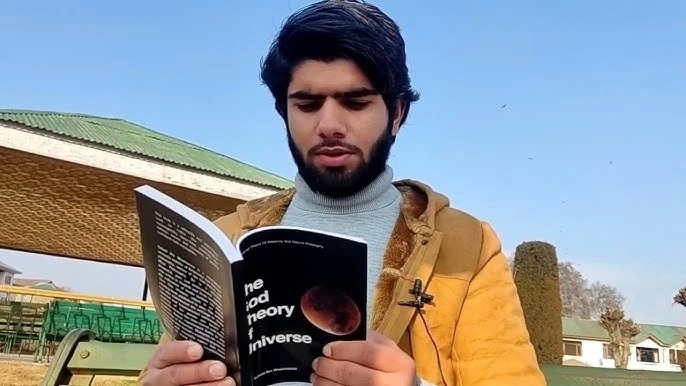By Sameer Ahmad
On a clear summer night in Kulgam, when the power cuts leave the streets in darkness, the sky over this small Kashmiri town opens up like an ancient storybook. Stars scatter across it in patterns older than history. It was under this very sky that a young boy named Suhail ibn Shahnawaz first began to dream—not of the nearby city of Srinagar, nor of distant Delhi, but of the farthest reaches of the universe.
In April 2026, that boy, now a 26-year-old physicist, will stand on a stage in Paris at the 2nd International Conference on Gravitation, Astrophysics and Cosmology (ICGAC2026), speaking alongside Nobel Laureates and some of the most brilliant astrophysicists alive.
For Suhail, known locally as the “Rocket Boy of Kashmir”, the invitation is more than an academic honour. It’s the crossing of a bridge—one that stretches from the snow-lined orchards of South Kashmir to the glittering lecture halls of Europe.
The Spark
Suhail’s story doesn’t begin in a state-of-the-art laboratory, but in the cramped room of a modest home, surrounded by worn textbooks and a hand-me-down computer. As a child, he would trace rocket designs on scraps of paper, copying images from encyclopedias his father borrowed from the local library.
“When you grow up here, you’re surrounded by mountains,” Suhail says. “But I was always looking beyond them—wondering what was out there, in the black between the stars.”
While his classmates studied for competitive exams, Suhail buried himself in physics journals and online lectures. By his late teens, he had designed Buraq‑1, a symbolic space mission aimed at sparking interest in aerospace among Kashmiri youth. It wasn’t a satellite launch in the literal sense, but a launch of imagination—and it worked. Students across the Valley began showing up at his talks, eager to hear about black holes, quantum gravity, and the mechanics of space travel.
Kashmir is not an easy place to nurture a career in advanced physics. Years of political unrest have left gaps in infrastructure, funding, and mentorship. Yet Suhail believes this backdrop made his work more urgent.
“In places like ours, science can be more than education—it can be hope,” he says. “It tells young people that their future doesn’t have to be limited by geography or politics.”
This belief drives his science outreach programs. Suhail has spoken in rural schools where students have never seen a telescope, let alone used one. He simplifies complex theories into relatable analogies—comparing spacetime curvature to the way a blanket sags under weight, or describing quantum entanglement as a cosmic version of “instant messaging.”
His appearances on local platforms like the Teen Talk Show have further cemented his role as a bridge between science and society.

The Paris Stage
The ICGAC2026 in Paris is no ordinary conference. It draws an elite circle of minds who study the fundamental laws of the universe. For Suhail, being among them is a recognition of both his research and his vision for accessible science.
He will present on intersections of quantum gravity and cosmological models, but he also hopes to highlight how nurturing talent in underserved regions can expand humanity’s scientific reach. “If even one global institution decides to collaborate with researchers from Kashmir after this, I’ll consider it a success,” he says.
A Broader Mission
Though the Paris trip is a career milestone, Suhail sees it as part of a much larger journey—one that involves mentoring the next generation. He dreams of setting up a dedicated science centre in Kashmir, equipped with labs, telescopes, and 3D printers, where children can learn by building, experimenting, and questioning.
“Space belongs to everyone,” he says with conviction. “I want every child here to feel they can be part of this cosmic journey—not just read about it in textbooks.”
The Symbol and the Story
In a region often associated in headlines with tension and conflict, Suhail’s story offers a different narrative—one of resilience, curiosity, and ambition. He carries with him the unspoken message that the most powerful form of resistance can sometimes be creation.
When he walks onto that stage in Paris in 2026, the audience will see a young physicist from India. But in the quiet streets of Kulgam, he will still be that boy who once lay under the night sky, sketching rockets and dreaming of worlds unseen.
And perhaps, for the next young dreamer looking up at those same stars, the journey will seem just a little closer.
The views expressed in this article are solely those of the author and do not necessarily reflect the opinions or views of this newspaper